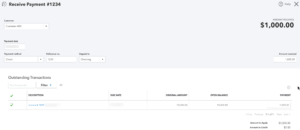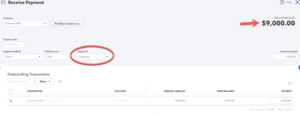Have you ever noticed that some transactions in your books are being categorized to a suspense account? Suspense accounts can be confusing. You may have questions such as: What is the purpose of this account? When do you use it? Why does it have a balance?
We will discuss each of these questions one at a time and share a practical example of how these accounts can be useful.
What is the purpose of a suspense account?
A suspense account is an area in which transactions or amounts are temporarily recorded. You would use this account primarily for transactions that could not be fully determined at the time they are recorded.
A business can have multiple suspense accounts within its books for various purposes. However, good business practice is to verify that these accounts show a zero balance at the end of each reporting period.
When might you use a suspense account?
There are many scenarios where you would use a suspense account. Some examples include:
- Bank errors or reversals of bank service fees
- Recording customer returned checks
- Recording fraudulent transactions
- Recording unknown credit card purchases
Let’s examine one of the examples above in more detail. For example, suppose you deposited a payment from a customer for $10,000. However, the bank only reports a deposit of $1,000. Clearly, you have a bank error! How do you record this in your books?
First, you want to call the bank. Next, when you record your customer payment, you will want to enter two payments: One for the $1,000 deposit already made in your bank feed, and another for the $9,000 to be credited for the bank error. To do this, you could employ a suspense account.
Let’s explore our example in QuickBooks Online (QBO) to see what that entry might look like.
First, record the $1,000 customer payment and apply it to the related invoice.

Next, record a second payment from the customer for the $9,000 remaining balance. For this payment, the Deposit to field will be assigned to Suspense.

Match the bank’s deposit of $1,000 to our first customer payment.

When the bank corrects the error and deposits the remaining funds, you would record the $9,000 deposit to the same suspense account to remove the balance.

After the bank resolves the error, you would then match the deposit in your bank feed.

In this way, your suspense account has been cleared, your customer payment is recorded, and your bank account shows receipt of all funds. This method also would prevent you from going back in time and trying to correct old entries, which can increase errors in your books.
What if you have a balance in Suspense?
If you follow the method above when working in a suspense account, you generally should not have a balance in this account. What if you have done a review of your books and noticed you have a balance?
In this case, you will have to do some detective work. Ask yourself these questions:
- Have any bank errors been reported to the bank and corrected?
- Have any returned customer payments been resolved?
- If you had fraudulent transactions, have these been resolved?
- Have you determined the nature of any unknown credit card charges?
When all transactions in a suspense account are resolved, there will be corresponding entries that offset each other. In our example above, notice how the transactions we entered impacted the suspense account in our client’s books:

While suspense accounts are used for temporary transactions, they can be useful in keeping your books clean and organized. They can also establish a clear audit trail when events like bank errors or fraudulent activity occur in your books. Interested in additional tips on whether your books are correct? Check out our blog on how to verify that your books are accurate.

